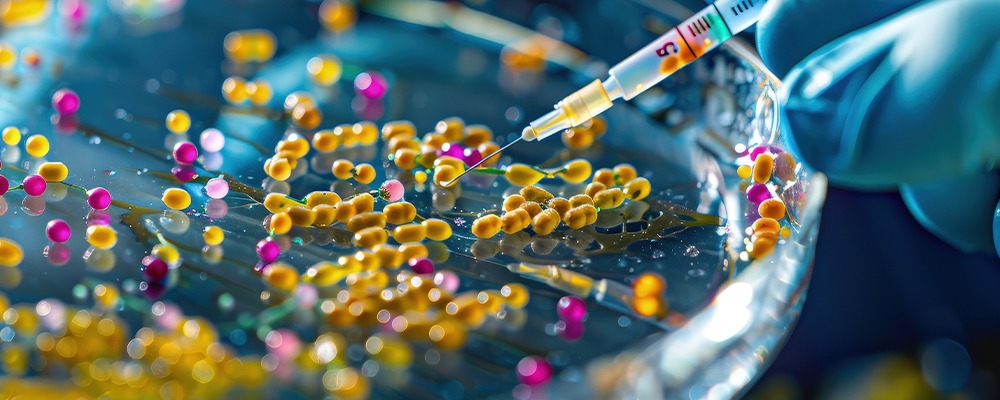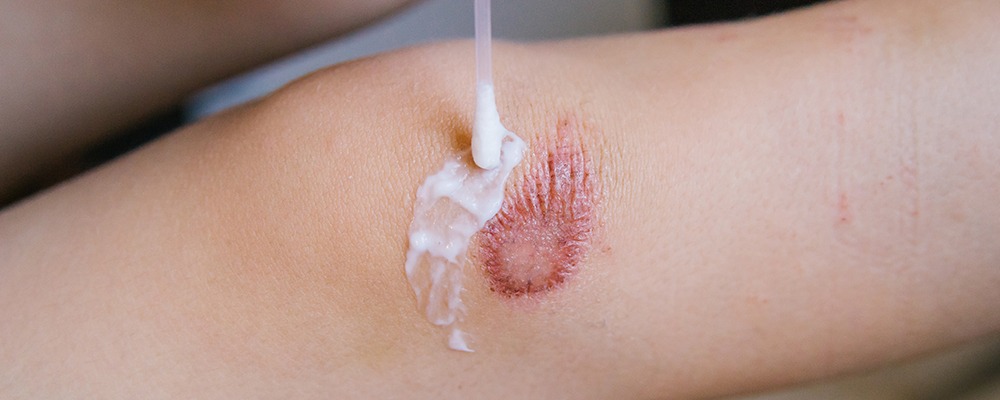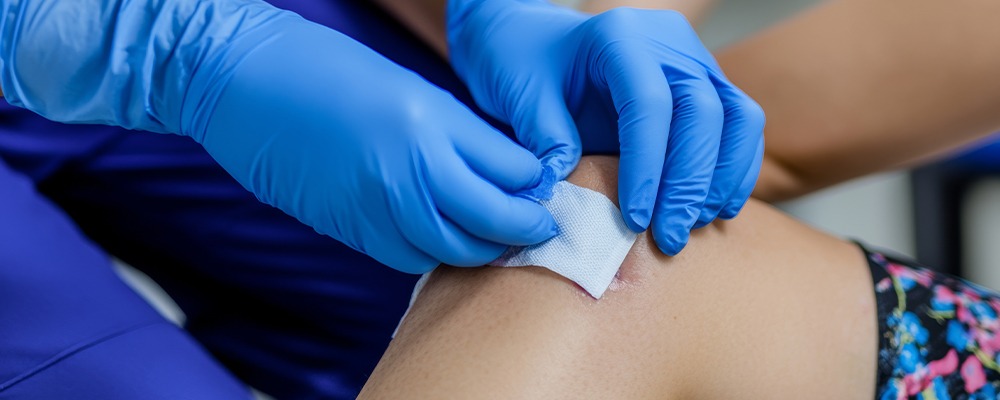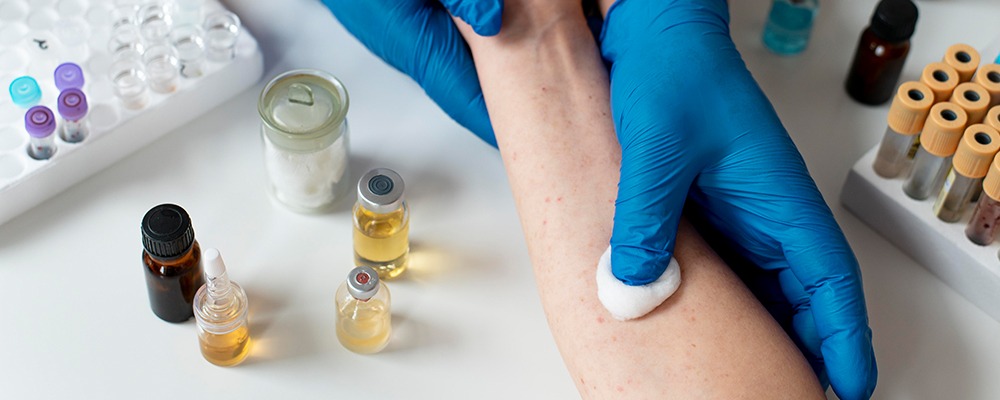Wound healing is a complex biological process that restores the integrity of damaged tissue. From minor cuts to severe injuries, the body’s ability to repair itself is essential for survival. Advances in regenerative medicine have brought about innovative treatments that accelerate healing and enhance tissue regeneration. Among the many biochemical agents involved in this process, trypsin, a proteolytic enzyme, has gained significant attention for its role in wound healing and regenerative medicine.
Trypsin, primarily known for its function in digestion, is a serine protease that breaks down proteins into peptides and amino acids. Beyond its role in the digestive system, this enzyme has therapeutic applications, particularly in debridement, inflammation regulation, and tissue remodelling. This article explores how trypsin contributes to the wound healing process and its potential in regenerative medicine.
Understanding Wound Healing
Wound healing is a highly coordinated process that occurs in four overlapping phases:
- Haemostasis – The immediate response to injury, where clot formation prevents excessive bleeding.
- Inflammation – White blood cells migrate to the wound site, fighting infection and releasing signalling molecules.
- Proliferation – New tissue forms as fibroblasts produce collagen and other extracellular matrix components.
- Remodelling (Maturation) – The final phase, where collagen reorganises, strengthening the healed tissue.
Dysfunctions in any of these stages can lead to chronic wounds, infections, or impaired healing, which are commonly observed in conditions such as diabetes, pressure ulcers, and post-surgical complications. To counter these challenges, researchers and medical professionals have turned to enzymes like trypsin to promote efficient wound healing.
Trypsin as a Debriding Agent

One of trypsin’s most notable applications in wound management is enzymatic debridement. Debridement is the process of removing necrotic (dead) tissue, cellular debris, and foreign material from a wound to promote healing. If necrotic tissue remains, it acts as a barrier, preventing new tissue growth and increasing the risk of infection.
Trypsin acts by breaking down denatured proteins in necrotic tissue without damaging healthy tissue. This selective proteolysis makes it an effective and less invasive alternative to surgical debridement. In clinical settings, trypsin-based wound dressings and ointments are used to accelerate the natural cleaning process, ensuring a moist and favourable environment for
healing.
Anti-inflammatory Properties of Trypsin
Inflammation is an essential part of the healing process, but prolonged or excessive inflammation can delay recovery and cause complications such as fibrosis or chronic wounds. Trypsin plays a dual role in modulating inflammation.
- Regulating Pro-Inflammatory Cytokines
-
-
- Trypsin helps break down inflammatory mediators that, if overproduced, can lead to excessive swelling and pain.
- By reducing the levels of these mediators, trypsin ensures a balanced inflammatory response, preventing unnecessary tissue damage.
-
- Enhancing Immune Response
-
- Trypsin activates protease-activated receptors (PARs), which are involved in cellular signalling.
- These receptors help regulate immune responses, ensuring that white blood cells effectively target pathogens without causing excessive inflammation.
By controlling inflammation, trypsin allows wounds to progress through the healing stages efficiently, reducing the risk of chronic wounds and fibrosis.
Trypsin in Tissue Regeneration and Cellular Growth

Regenerative medicine focuses on restoring damaged or lost tissues through biological mechanisms. Trypsin plays a key role in this field by promoting cell proliferation, differentiation, and extracellular matrix remodelling.
Fibroblast Activation and Collagen Synthesis
Fibroblasts are the primary cells responsible for producing collagen and extracellular matrix (ECM) components, which provide structural support to healing tissues. Trypsin has been shown to:
- Stimulate fibroblast migration to the wound site.
- Enhance collagen production, improving wound tensile strength.
- Break down excessive scar tissue, ensuring proper tissue architecture.
By facilitating these processes, trypsin contributes to the restoration of skin and other connective tissues.
Role in Stem Cell Therapy and Regenerative Medicine
Stem cell therapy has emerged as a revolutionary approach in regenerative medicine, particularly for burn wounds, ulcers, and surgical wounds. Trypsin plays an indispensable role in cell culture by:
- Dissociating adherent cells from culture flasks, allowing for efficient expansion.
- Facilitating the isolation of mesenchymal stem cells (MSCs), which can differentiate into skin, muscle, and bone cells.
- Supporting the enzymatic preparation of tissue scaffolds, essential for regenerative grafts.
As regenerative medicine advances, trypsin remains a critical tool in both laboratory and clinical applications.
Clinical Applications of Trypsin-Based Wound Therapies

Trypsin is widely incorporated into medicated wound dressings, topical ointments, and sprays, often combined with other enzymes such as chymotrypsin and papain for enhanced efficacy. These formulations are used to treat:
- Diabetic foot ulcers – Chronic wounds caused by poor circulation and high glucose levels.
- Burn injuries – Enzymatic debridement reduces infection risk and promotes faster tissue regeneration.
- Surgical wounds – Helps prevent adhesions and optimises post-surgical recovery.
- Pressure ulcers – Effective in managing bedsores by removing necrotic tissue and enhancing granulation tissue formation.
With growing demand for non-invasive, enzyme-based therapies, trypsin continues to be a preferred choice in wound care.
Safety and Considerations
While trypsin offers numerous benefits in wound healing and regenerative medicine, it must be used cautiously:
- Enzyme concentration and application duration should be monitored to prevent excessive degradation of healthy tissue.
- Patients with protein allergies should consult healthcare professionals before using trypsin-based treatments.
- In cases of deep wounds or infections, trypsin is best used in combination with antibiotics or antiseptic treatments.
Medical research continues to refine trypsin-based therapies to maximise benefits while minimising risks.
Conclusion
The use of trypsin in wound healing and regenerative medicine represents a significant advancement in modern healthcare. By facilitating debridement, regulating inflammation, promoting cellular growth, and supporting regenerative medicine, this enzyme plays a crucial role in optimising the body’s natural healing mechanisms. Its applications in enzyme therapy, stem cell research, and tissue engineering continue to expand, offering promising solutions for both acute and chronic wound management. As more research unfolds, trypsin’s potential in regenerative medicine is set to grow, leading to improved patient outcomes and enhanced therapeutic strategies.
At Biolaxi Enzymes, we take pride in manufacturing high-quality trypsin formulations tailored for pharmaceutical, medical, and industrial applications. Our commitment to scientific expertise, innovation, and superior enzyme solutions ensures that we deliver effective and reliable products to support wound healing and regenerative medicine worldwide. Whether in clinical wound care, surgical treatments, or biomedical research, our enzymes are designed to enhance healing efficiency and improve lives.




